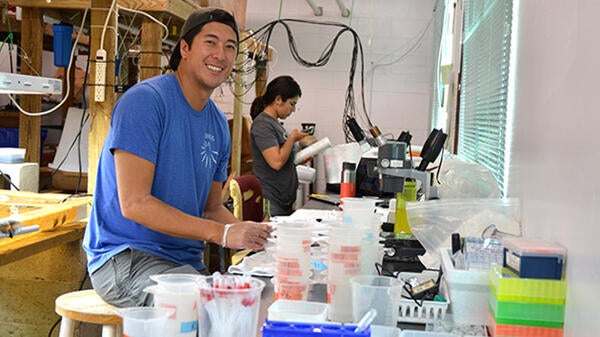Kevin Wong grew up in British Columbia, Canada, an area where snowy mountains, deep forests, and a nearby sea suit people like him with a love for the natural world. He took his enjoyment of the outdoors to college at Carleton University in Ottawa, Ontario, where he intended to study environmental engineering. However, it was after changing majors in his second year—and an auspicious Internet search introduced him to BIOS—that he realized his true passion lay in research aimed at determining the impacts of human activities on the environment.
Working to Address the Gender Gap
September 21, 2017
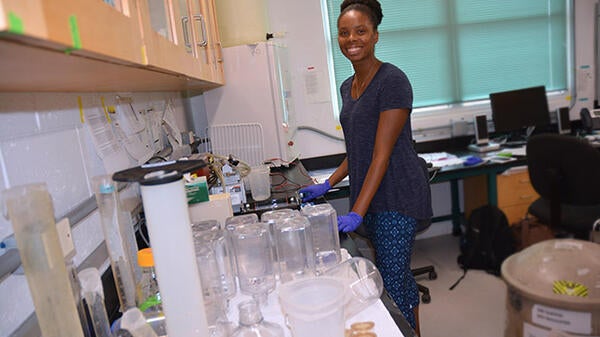
The gender disparity within science, technology, engineering, and mathematics (STEM) degree programs and the college-educated workforce is an issue that has faced colleges, universities, funding agencies, and employers for decades.
A Special Net for Special Organisms
September 21, 2017
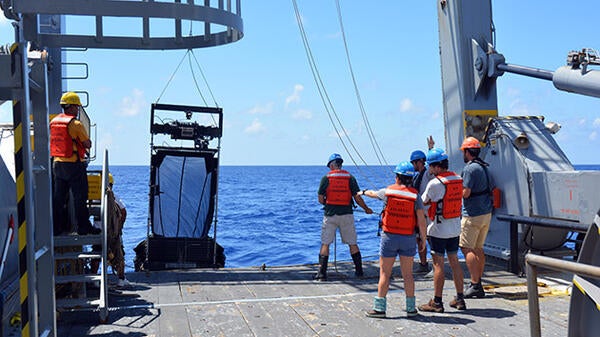
At midnight on a warm night off Bermuda in July, research technician Joe Cope and a small team of crew members prepared to deploy a net system stretching nearly the length of a city bus from the stern of the research vessel Atlantic Explorer. Though it’s not unusual for oceanographers to work around the clock during a research cruise, the timing of this particular cast was important. Every night, under cover of darkness, the marine animals they hoped to capture—some a few inches in length, others the size of a sand grain—come to the surface to feed on phytoplankton, after spending the daylight hours far below the surface, hiding from predators.
An Evening at the Hamilton Princess
October 14, 2017
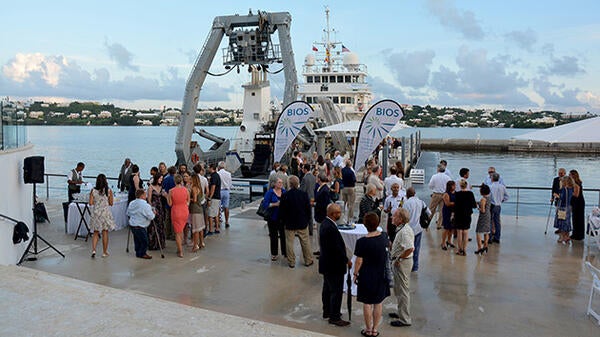
The BIOS-operated vessel Atlantic Explorer docked at the Hamilton Princess Hotel & Beach Club on September 22 for a special evening that included ship tours, mingling on the dock with BIOS researchers, and the opportunity to view a television program that features BIOS’s internationally recognized work on climate change research.
Coastal Clean Up Effort a Success
October 14, 2017
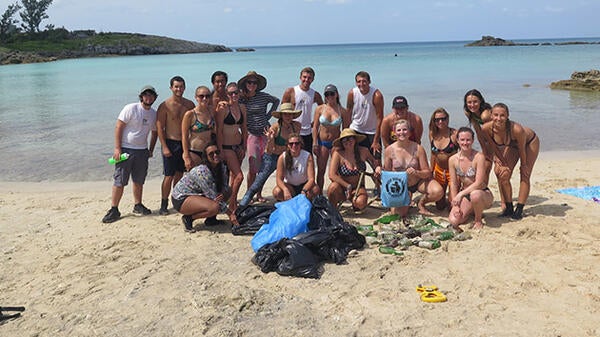
Bottles, bits of plastic, and a discarded lawn chair were among items pulled from Whalebone Bay and Mullet Bay during the annual Ocean Conservancy international coastal clean up on September 16, sponsored locally by Ernst and Young in partnership with Keep Bermuda Beautiful.
Keeping Track of Bermuda’s Weather
October 14, 2017
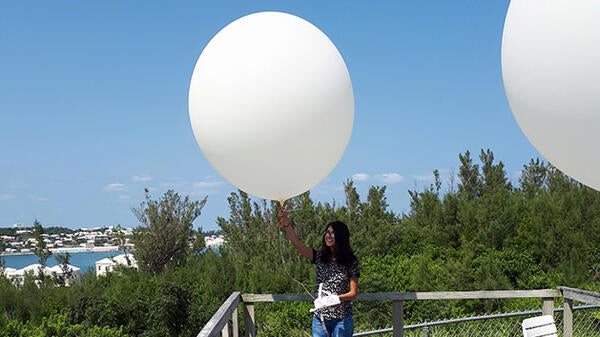
Twice a day on Bermuda—and at weather stations around the world—meteorologists launch huge helium or hydrogen-filled weather balloons equipped with sensors that monitor temperature, moisture, and pressure in the atmosphere. The data generated by balloon launches are then transmitted globally by weather services and assimilated into computer models, which meteorologists use to forecast the weather.
A Shark Attack on Glider Jack
October 14, 2017
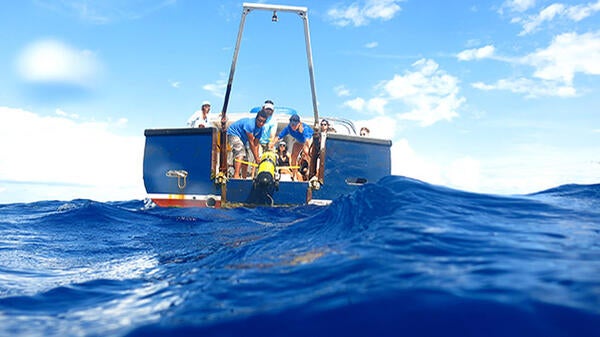
Not long after sunrise on July 24, a BIOS-operated ocean glider named Jack climbed slowly from a depth of nearly a half-mile offshore Bermuda toward the sea surface as it’s sensors collected and measured ocean properties, including temperature, salinity, oxygen, chlorophyll, and currents. It was a routine operation for Jack, an airplane-shaped vehicle that has traveled a similar path thousands of times over the past two years for BIOS researchers in the Sargasso Sea.
From Classroom to Real Oceanographic Research
October 14, 2017
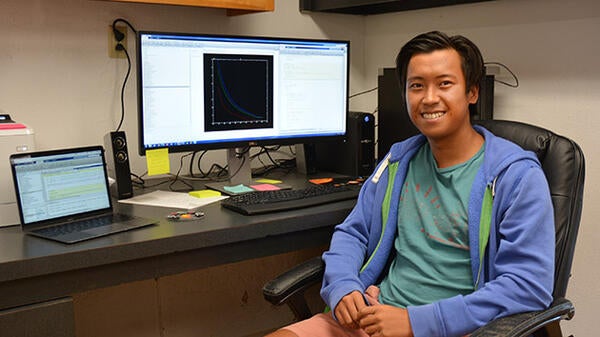
Sitting in a math lecture at the University of Cambridge in England last winter, Scott Li was focused on the course and completing his term work during his third year in the Department of Applied Mathematics and Theoretical Physics. That is, until a researcher in the university’s Department of Earth Sciences walked in at the end of the lecture to encourage students to apply for the Cawthorn Cambridge Internship at BIOS.
Tracing a Water Journey
October 14, 2017
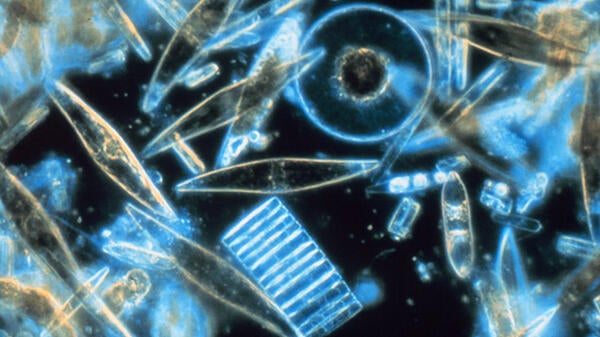
In the Southern Ocean, cold surface water sinks to about 1,500 feet (500 meters) and travels in the dark for thousands of miles before resurfacing, some 40 years later, near the equator in the Pacific, Atlantic, and Indian ocean basins. Scientists call this major water mass the Sub-Antarctic Mode Water, or SAMW, and it is regarded as a powerhouse of a mixer in the oceans. It’s also critical to marine life; when it warms and rises into the sunlit subtropical and tropical waters, the nutrients it contains are estimated to fuel up to 75 percent of the microscopic plants growing there.
BIOS Hosts Annual Teacher Training Workshop
November 14, 2017
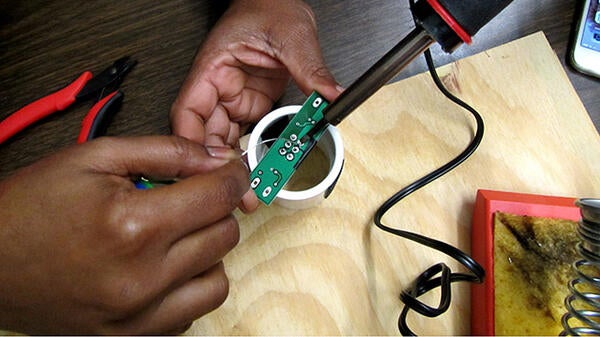
Forty public school teachers took part in two-day training at BIOS in late October as part of the 2017 Bermuda Union of Teachers annual professional development conference. The workshop, offered under the Mid-Atlantic Robotics IN Education (MARINE) program, introduced participants to components of the beginner Remotely Operated Vehicle (ROV) competition, including the construction of simple circuits and soldering.
